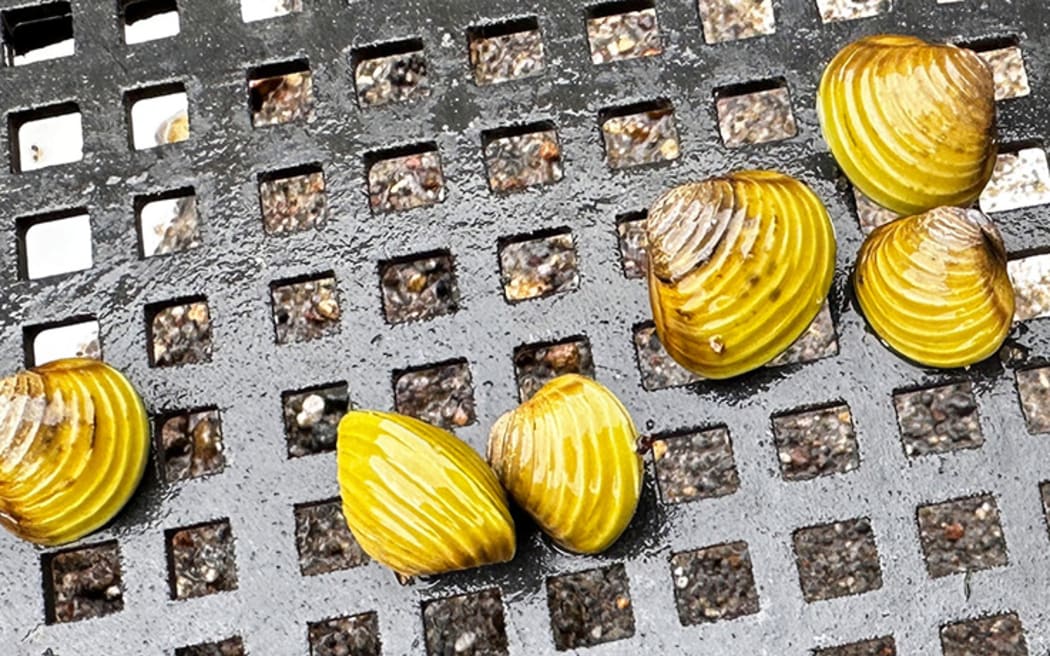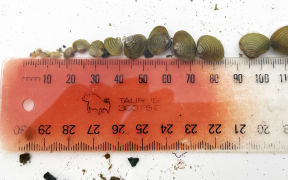
The freshwater gold clam (Corbicula fluminea). Photo: Supplied/ NIWA
Fish and Game is closely monitoring the spread of invasive species gold clam at Lake Okataina near Rotorua.
Chief executive Corina Jordan said the clams, native to eastern Asia, had been confirmed in the Waikato River since May 2023.
The species was mainly spread by boats with a ballast system, and reproduced rapidly, which can clog water-based infrastructure such as electricity generation plants, irrigation systems and water treatment plants.
"Fish and Game is deeply concerned about discussions to close Lake Okataina, particularly given the Waikato River system and Lake Karapiro are under next to no restrictions by MPI [Ministry for Primary Industries]," Jordan said.
"We believe MPI and Waikato Regional Council should be taking stronger measures to prevent the spread of gold clams to other regions to address not only our concerns, but also those of mana whenua.
"We're disappointed MPI and the council have not invested more resources into isolating the gold clam at 'ground zero' in the Waikato River."
Fish and Game said other steps, such as a wash station at boat ramps, should have been installed as soon as the gold clams were discovered.
Meanwhile, in a statement Biosecurity New Zealand said it had been working with partners - including Waikato Regional Council and iwi - to respond to the freshwater gold clam incursion in the Waikato River.
"Biosecurity New Zealand only recently received a request from Ngati Tarawhai to close the lake to boating and fishing - this would be done through a mechanism called a Controlled Area Notice under the Biosecurity Act," deputy director-general Stuart Anderson said.
"We are assessing the pros and cons of this at the moment and have not made a decision. We will continue assessing this over the next couple of days.
''Importantly, we are evaluating other options to significantly mitigate any risk of the clams spreading to Lake Ōkataina, including boat cleaning stations and leveraging the boat self-certification scheme Bay of Plenty Regional Council already has in place."
Anderson said Biosecurity New Zealand had completed surveillance of the Waikato River, including Lake Taupō, and established that the clam is present in approximately 95 kilometres of the river - from Lake Maraetai to a little way south of Hamilton City.
"Surveillance of tributaries is complete and has found no evidence of the clam.
"We have completed surveillance at six national sites so far, with no positive results. We are planning, with regional councils, to carry out surveillance at approximately 80 further sites."
Anderson said a multi-channel public awareness campaign, including advertising and signage promoting 'Check, Clean, Dry' to prevent the spread of the clam, was set to launch in October and run through the warmer months.



